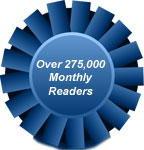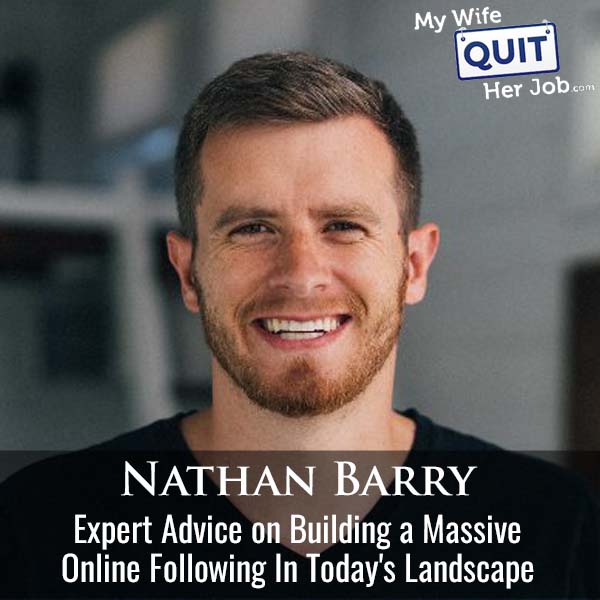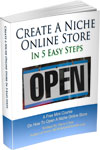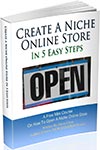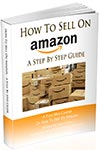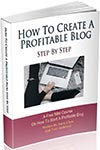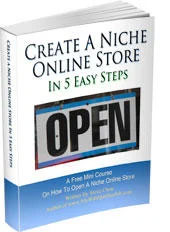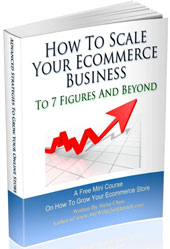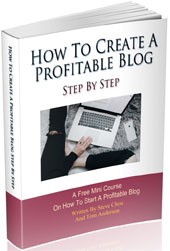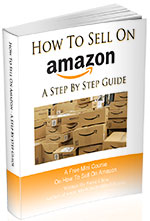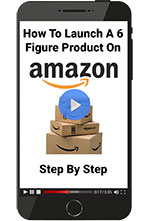Podcast: Download (Duration: 50:39 — 58.3MB)
In this episode, my friend Nathan Barry and I debate the best way to build an audience today in light of AI and the many changes with Google, Facebook, Tiktok and Instagram.
Nathan is the founder of ConvertKit and the Nathan Barry show.
Get My Free Mini Course On How To Start A Successful Ecommerce Store
If you are interested in starting an ecommerce business, I put together a comprehensive package of resources that will help you launch your own online store from complete scratch. Be sure to grab it before you leave!
What You’ll Learn
- The best way to build an audience
- What’s going on with Google, Facebook, Tiktok, and Instagram
- The role of AI with content creation
- Try ConvertKit For Free
Sponsors
SellersSummit.com – The Sellers Summit is the ecommerce conference that I’ve run for the past 8 years. It’s small and intimate and you’ll learn a ton! Click Here To Grab The Recordings.
The Family First Entrepreneur – Purchase my Wall Street Journal Bestselling book and receive $690 in free bonuses! Click here to redeem the bonuses
Transcript
You’re listening to the My Wife Quitter Job Podcast, the place where I cover the latest strategies to grow in online business. And today I’m my friend Nathan Barry on the show and we are going to cover the creator landscape today and the best way to build an audience in light of everything that’s going on with Google, Facebook, TikTok, Instagram, and more. But before I begin, if you haven’t picked up my Wall Street Journal bestselling book, The Family First Entrepreneur yet, it’s actually available on Amazon at 38 % off right now. My book will teach you how to achieve financial freedom.
00:28
by starting a business that doesn’t require you to work yourself to death. Plus, you can still grab my free bonus workshop on how to sell print on demand and how to make passive income with blogging, YouTube and podcasting when you grab the book over at mywifequitterjob.com slash book. So go over to mywifequitterjob.com slash book, fill out the form and I’ll say the bonuses right away. Now onto the show.
00:55
Welcome to the My Wife Quarter Job podcast. Today I’m thrilled to have Nathan Barry back on the show. And the last time I had him on was back in 2015 when he first started ConvertKit. I want to say he was like one year in. And since that time 10 years ago, he’s grown it to I think $40 million a year in recurring revenue with over 50,000 users, which is mind blowing. But I didn’t invite Nathan to come to talk about his software tool. At the core, Nathan is a creator.
01:25
He’s written several books, he’s got a new podcast and he has his pulse on the creator community. So today what we’re going to do is we’re going to discuss content creation and the best way to build an audience today. So welcome back, Nathan. How are you Doing well. Thanks for having me on. I didn’t realize that you had been since 2015. 2015. Yeah. Uh, probably had early traction as a company, but not much beyond that. Yeah. And I was a user of convert kit.
01:51
back in the day, and we were just talking about this before I hit record, I might come back. I’m here for of all the new features and maybe we’ll talk about it at the end, but let’s just take a couple of minutes here to catch up. In addition to running ConvertKit, soon to be rebranded as Kit. I know you just started a podcast called Billion Dollar Creator. I remember listening to your other podcast a while back. I think it was, was it just Nathan Berry Show or something like that? Yeah, exactly. Why did you decide to start another one? And what happened to the?
02:21
to the last one. Yeah. So it’s funny the arc that all of these things take. I actually, because I’m basically I think I’m going to come come back to just the Nathan Barry show. So it’s a circle. I like podcasts that have co-hosts. I think it’s fun when you get like recurring characters and all of that. And so in seeking out a co-host for the show, you know, I was thinking through my friends of like who has incredible business experience is a lot of fun.
02:50
and would be excited to grow a big show. And I reached out to Rachel Rogers and we were like, you know, asked if she wanted to do it. And she’s like, yeah, absolutely. That sounds great. And we ended up coming to the concept of the billion dollar creator, which is an essay that I wrote, I don’t know, four years ago now, basically talking about how an, you know, attention and an audience is one of the most powerful forces on earth. And like what you do, what you point that to really matters. Some people point it to
03:20
Ebook sales. Other people like Ryan Reynolds or someone else pointed to scaling aviation gin to a multi hundred million exit or something else. And I was noticing this trend in the creator economy of creators really building lasting equity value in businesses. And so I wanted to especially talk about that so we can get into that more. But the quick arc of the show is Rachel and I scaled the show. We did a live tour, like five cities.
03:50
Uh, you and I hung out at FinCon in New Orleans where we, uh, did a, um, did a live podcast episode in front of like a thousand people or whatever the audience was. Um, so that was a ton of fun. Uh, but then at the, basically the beginning of the year, Rachel was like, Hey, I think I actually want to step back from a bunch of things in my business. And she’s built an Epic business. And I always respect when someone’s like, wait a second.
04:18
actually, I don’t need to hustle anymore. I think I’m gonna like enjoy this next year with my kids and all of that. And so then I have the show again, just me. so I’ve pivoted a little bit and I’ll probably just go back to it just being called Nathan Barry’s show. That was a good show. I remember listening to it. It’s basically- year, two years ago? Yeah. I love conversations like dissecting businesses and really diving in. And so that’s-
04:47
That’s what I’m doing. And I actually just built out a new studio where we can really like get on the whiteboard and like sketch out things. like I did an episode that’ll come out soon with Ali Abdal and we’re like diving into the next phase of his business. And we’re just actually at the whiteboard, like diagramming how it could work and like getting into that coaching style of episode. So I think it’ll be unique and different and still high production quality. Cool.
05:14
Now I know you just had your annual creator conference called craft and commerce. What were some of the trends in the creative community that stood out to you just based on the attendees that were there? Well, the first thing that I noticed is creators are just making way more money than they did in past. Okay. And like you and I have been around this business for a long time. And I was like thinking back to 2010, 2011 is when I
05:41
came into this world and started paying attention to blogging content creation. And then if you were making 60 to $100,000 a year as a content creator, you were at the top of your game. remember following like Leo Bavotta from Zen Habits. Oh yes, is he still around? Yep, he’s still writing Zen Habits and like Time Magazine named Zen Habits one of the top 25 websites that makes the internet great. And I remember seeing Leo at a conference and being like, oh wow, like.
06:11
That’s Leo, you know, like he’s got one of the biggest newsletters. I think at the time he had 10,000 subscribers, maybe, you know, and that was like him and Chris Guillebeau and other people were the like the biggest in the space. And so now, which I like, if I were to tell someone, oh, this person’s built a great audience and they’re making a million dollars a year off of their audience, you’d be like, OK, yeah, like nothing about that would shock you in any way, right? That would be a very normal.
06:41
Uh, statement. And so I’ve just noticed this trend continue. And I think it comes down to two reasons. The first is that audience sizes are way bigger, right? Like 10,000 used to be a giant audience. Now James clear is pushing like almost 3 million subscribers on his list. It’s crazy. That guy is on the top of the list every single week. I don’t know how he does it. Yeah, it’s, it’s wild. Um, so that
07:10
Like audience sizes are way bigger. Even like, you know, I don’t work that hard on growing my audience, but like my personal newsletter is 40,000 subscribers, right? And I was talking to someone the other day and they’re like, yeah, I just scaled from 20,000 to 80,000 in the last year. And like, that’s pretty normal. Whereas years ago, those numbers would be ridiculous. And so audience sizes are bigger. And then the second thing is we’re just better marketers. Like we have access to way better tools.
07:39
We understand copy and conversion rates better. know, like every creator business that I look at, there’s just a lot more sophisticated. So we’re selling higher price products, convert, you know, we’re selling them through more intelligent marketing design is better. It used to be years ago, you know, like great design was the exception. And now I feel like great design is, is fairly common. And so you combine those things and creators just earn a whole bunch more money. And so even last year to this year,
08:08
like at Crafting Commerce Attendees, they’re just a lot better off. Like they’re just earning more money. So when you say earning money, can you break that down for me? What is the primary way that they’re making money? Is it core sales, memberships, advertising, sponsorships? You get the whole range and it depends a lot in each industry. So if someone’s really grew up on YouTube, then they’re probably leaning pretty heavily on advertising and sponsorships. Okay. Whereas
08:37
If they got their start on Twitter, now X, then I see a lot more product sales. Uh, and then if they like, if their main growth was on Instagram or Tik TOK, then you sort of like, depends. They could fall into either bucket. I would say the people earning the most are selling digital products of some kind. Either, you know, an ebook or a course in the say 30 to $200 range where they’re selling a lot of them.
09:06
or they’re going the high price course and it’s the 1000 to 5000 range, you know, and there might be cohorts in there. And then you also see a lot of people add on like a coaching component to their business because you don’t need that big of an audience if you’re selling coaching and it’s a thousand dollars or more a month. You know, you don’t need that many people or group coaching to where you’re getting to the point that, you know, this business makes 20,000 to 40,000 a month.
09:36
Yeah, it’s funny. I teach e commerce and I also teach building an audience now. And digital products is just so much easier because you don’t have to handle anything physical. But on the flip side, you need to build the audience to sell the digital products with physical products. They can kind of stand on their own a lot of times, but there’s definitely appeal for both. Yeah, and actually there’s a business that I’m invested in. I’m trying to decide I’m gonna I’m not gonna say the name of the company.
10:05
Cause that way I can say more numbers. Okay. It’s always that trade off, right? You say the name of the company and then you got to be more generic or all of that. But they’re in Ecom and they’re, you know, about 2 million a year in physical product sales, well established, a solid brand and business. And this last year, two years ago, they really got into content and they got to the point where they’re trying to build up the content arm to promote Ecom and back and forth. And
10:37
That went okay. They added some digital products, core sales, that sort of thing that complimented their physical products well. But they’d get to like 5,000 a month in revenue, maybe 20,000 a month in digital sales. anyway, at the end of last year, they redid all the digital content, so it’s much more buttoned up and professional. And the product market fit on it is better. And then they got Facebook ads working really well.
11:04
And so now they’re pushing 120 to 200,000 a month in digital product sales, primarily driven by Facebook ads. And they’ve just gotten it where the blend between physical and digital and the cross promotion is working really, really well, each lending credibility to the other. And that’s the thing. And a lot of what you talk about, right, is as a as an econ brand, when you can figure that out, it’s so powerful.
11:32
Yeah, for sure. That’s like the Holy Grail actually. Because then you can just launch a new product and people will just buy it because of you really. So oh yeah. So there’s a lot of been happening in Google and recently so I’m curious at your event where there are a lot of bloggers. Yes, especially in you know, you get a lot of food blogs in particular. I would say no one is strictly a blogger anymore. Yeah. Right. You’re
12:01
your maybe a blog is your primary channel, but you’ve got YouTube and a podcast as well. Or you’ve got like no one says I am only this. Everybody uses the other platforms, but they have like a hub and model. So very few people are pure bloggers. Yeah. Okay. Yep. Um, but I would say the industry like is talking about changes from Google.
12:29
I think the food blog industry is hit the hardest, right? Because they have so much traffic coming in and they’re so reliant on advertising that if you’re a food blog that has not been growing a newsletter or, growing on say YouTube as well, like you’re hurting right now. I mean, I think all bloggers who aren’t well established are hurting right now. Yeah, I think that’s true. And I think Reddit is the only beneficiary Reddit, Quora, LinkedIn. Those guys are the beneficiaries.
12:59
Which is bizarre to me. Like some of those Google search deals, we see it, right? As we play around with Reddit, we’re like, huh, this Reddit post is two days old, doesn’t have that many comments, isn’t even in that popular of a subreddit and it ranks top five for the search term. I know that. Okay. What, happened there? So let me ask you this. If you were to start a content channel today, what would you go with?
13:28
Hmm
13:31
That is a good question. depends. I think the answer depends so much on where you personally like to consume content. I have a good friend of mine who started to see people really take off on X and grow these accounts to 100,000 followers in say a year or two. And he goes, I should do that too. And he got like a month into it and he was like, actually, wait a second. I hate X. Why am I on that?
13:59
You know, and someone else will love the platform and the algorithm, what it feeds and all of that. So I think the biggest risk is seeing success that someone else has and then say, oh, I’m going to copy that playbook, but there’s a fundamental difference of like, we’re actually in a different niche or they love Instagram and I hate Instagram or something like that. So I don’t think it really matters that much what platform you choose. I’ve seen people recently build great followings on X, especially, uh,
14:28
great following on LinkedIn. And then I’m watching a bunch of ConvertKit customers build these followings on Instagram. I watched them follow very similar playbooks where they really have the same style of content. They’ve narrowed in the format and the predictability and all of these things. And they’re just like pumping out content. One new reel every day at the exact same time in roughly the same format, know, 60 seconds of value.
14:58
And they’re just absolutely exploding. And so you’re like, okay, and be trendy to, or be easy to say, oh, I’ll do that as well. But then the week after that, you’d see someone, you know, blowing up on LinkedIn and you’re like, oh, maybe I’ll do that. And so I think I would, I would say the growth strategies can work on any of these major platforms. And I would choose the one that you enjoy spending the most time on and optimize for that rather than, um, jumping to what.
15:28
like seems most interesting or what you heard on a podcast is working super well.
15:35
I just wanted to take a moment to tell you about a free resource that I offer on my website that you may not be aware of. If you are interested in starting your own online store, I put together a comprehensive six day mini course on how to get started in ecommerce that you should all check out. It contains both video and text based tutorials that go over the entire process of finding products to sell all the way to getting your first sales online. Now this course is free and can be attained at mywifequitterjob.com slash free.
16:05
just sign up right there on the front page via email and I’ll send you the course right away. Once again, that’s mywifequitterjob.com slash free. Now back to the show.
16:16
What’s funny is you decided to do a podcast, which in my opinion is one of the hardest things to grow. Right. And if you were going to do this to try to monetize something, I know for me, podcasts wouldn’t be my first choice, but I’m curious what your rationale was. I’d like pain and suffering. Of course you started a SaaS company. So it depends on what you’re optimizing for. If we’re trying to maximize.
16:45
views and attention like absolute top of funnel. Yeah, then I think right now what I would do is Instagram. And the reason so creator named Jefferson Fisher, you can look him up on Instagram and tik tok. He’s got something like 5 million followers on Instagram crazy. He’s a convert kit customer. This is a fun one where I was actually going through Instagram came across his videos. They were great. I followed him.
17:11
And then later someone on our support team was like, hey, I’m working with this lawyer on Instagram. I was like, could that be? And I clicked it and like, turns out he was already a customer and that’s awesome. But he is a trial attorney and he teaches people how to argue and how to discuss. His videos are the same every time in that it’s him in his car. So you got the seatbelt coming across. He’s got a different shirt or whatever, but he follows the same format and he’s like, okay, here’s what to do when someone keeps dismissing your argument.
17:39
Here’s what to do when you’re being gaslit. Here’s what to do when, um, you know, how to deal with a narcissist, you know, any of these things and they’re so polished, his advice is so good. And he follows the exact same format that his, he’s just absolutely exploded. And so Instagram reels Instagram reels. Okay. Yeah. And if you just search Jefferson Fisher on Instagram, you’ll find it. Um, I’m to pull them up right now and just, uh, yeah, 5.4 million followers. Right.
18:09
how to talk to someone who doesn’t like you, how to never struggle with small talk, right? If you look at his stuff, it looks very much the same, but great content. And I’ve noticed this a bunch of times where you’re basically able to build this massive top of funnel. So if I was looking for the most exposure, I would do that. The reason I went with a podcast is, the thing that I enjoy most is,
18:38
in-depth nerdy conversations about the inner workings of creative businesses, like the inside baseball side of it. Right. And that’s not, that’s not going to trend on Instagram. And so with the podcast, I still have a pretty small following. You know, we’re talking 5,000 downloads an episode, but the texts that I get afterwards are all from like top professional creators, right? Authors who have sold millions and millions of copies of books.
19:08
They have the giant YouTube channel, like all of these people and they’re like, hey, that episode with Tiago Forte was incredible. Like I was taking notes, you know? And so I’m trying to optimize for the highest quality listeners. So if I never got past 5,000 listeners, but a bunch of them, you know, I think I have the average, the highest average income per listener of maybe any podcast. And I think that’s pretty great.
19:36
I think in general podcasts seem to attract a higher quality person, at least just in my experience. And I run mine so I can just meet people, conversations with people like you. And then it’s funny that you mentioned Instagram, you didn’t mention TikTok. Is it because of a potential ban or?
19:55
I, there’s this thing that happens on, on every platform. There’s a relationship on every platform between discoverability and connection with followers. And you got to think about this. So the more a platform focuses on trending, showing you content tied to your identity or like your, your behavior habits.
20:24
the less they focus on like you subscribe to this, so you’re going to see it. Right, email is all the way at one end of the spectrum. You are subscribed to this email list, you will see it in your inbox, as long as it doesn’t hit spam. TikTok I think is the extreme on the other end. Sure Steve, you follow this account, but last time we showed you that video, you didn’t watch it, so we’re actually not gonna show you a video from that creator again for a while, right? You know, they’re very behavior based.
20:51
So I think TikTok, because they’re at that end of the spectrum, it makes it really easy to grow an audience there quickly. And the relationship with that audience is very shallow, not just because of the type of content, but also because the algorithm is focusing on helping discover new creators. So I’ve heard from a lot of people who made like focus on TikTok first and then really went to Instagram and then they started driving sales. And so, yeah.
21:21
It’s interesting. Yeah, I can see that perspective. Now, like in e-comm, I’ve seen a lot of people have very effective TikTok shops. And so there’s a range of things. What I think is that platforms could actually come in pairs for the most part. So, and it depends on whether they’re short form video focused or text focused. So if you’re saying, hey, growing on X is the most important thing for me, then I would also take that content and repost it on LinkedIn.
21:49
because it’s like 90 % the same. And the algorithm rewards very similar things and all of that. If you’re saying, I’m gonna grow on Instagram, great, repost it on TikTok because it’s pretty similar. Though I was noticing that Jefferson Fisher, who I referenced, has a different thumbnail style, exact same video, but different thumbnail style that makes it feel more native to TikTok versus Instagram. Who knows if that’s worth it or not? But the other thing is,
22:19
When you’re dual posting on different platforms, you get a feel for, was it a fluke that this one video took off? Let’s say I have a video go viral on Instagram and hit a million views and it does nothing at all on TikTok. Maybe, you know, it got some early engagement. Maybe it was lucky, something else. But if I have a video that crushes it on Instagram and on TikTok, I can probably trust that the hook was really good.
22:49
You know, I kept attention all the way through. got watch time. You know, I got say 120 % average watch time or average view duration. And then, and it’s like, oh, that worked really well. So basically by using both, pairing your platforms that you focus on, then you get to test your hooks and your content and see what works and basically get more signal than if you just relied on a single platform. I saw on your Nathan Barry website that you were probably never going to focus on YouTube.
23:19
And I’m curious as to that statement, why I don’t remember when I said that. I might’ve changed the language, but it was like, I’m probably not going to be on YouTube is what you said or something along those lines. I mean, there’s a lot that goes into that. I like running a conference, you know, this, cause you run a big event as well. You see a difference in people who are very visible on one channel versus another. So to give you an example, we had Casey Neistat out to speak at craft and commerce.
23:49
That man was mobbed in the Boise airport before he even made it to the car. Yeah. Because millions of subscribers on YouTube and it is his face. You know what that man looks like. Uh, the very next year we had Mark Manson out to speak. I don’t know how many millions of copies of C sold. It’s in the tens of millions of copies. Right? Yeah. Do you know what Mark Manson looks like? You and I do. I do. Yeah. But like do most people now Mark since then has built a million plus subscriber YouTube channel.
24:19
Um, Mark attended the entire conference, like every session he picked something to go to. He, some people were like, Oh, Hey Mark, it’s great to see you. would say until he got on stage, 80 % of the people at the event did not know that was Mark Manson. And they’re like, I had a conversation with that guy in line for coffee. Huh? And so when you choose like platform selection impacts your life.
24:46
Do you wanna be recognized when you go down the street? Do you wanna be mobbed even at the Boise airport? Absolutely not. Yeah. And so then think about, how big, what audience do you wanna target? How big do you wanna grow this? Like in my case, I’m thinking like, I wanna be known really well by a select group of people and I don’t wanna be interrupted at dinner with my family. Not that I’ll necessarily grow an audience to that size, but.
25:17
It’s something I was deliberate about. It’s funny because I’m thinking right now with AI and all these changes that are happening, I think blogging is kind of on its way out. At least from a small publication standpoint. And then even I think video is probably the stalwart, right? Yeah. The platform that’s least likely to get displaced anytime soon. Well, I think I don’t know how long ago I commented on
25:47
whether or not I was going to use YouTube. But YouTube has also just really been like a steady foundation in the industry. And people have demonstrated over and over again that you can build great relationships and, you know, like YouTube is not the trend in any way. It’s just like, you can keep showing up. And so even podcasts, many of them drive a substantial number of their views on YouTube.
26:16
And the video first podcast really do quite well. So that’s the way I think about it now. Like now I am focused on growing on YouTube, but I’m trying to grow this show in a very specific niche. And, um, and I would say that 80 % of my effort for podcast growth is on now on YouTube. And that’s why, like I built out a full podcast studio and designed it a certain way and made it so that you should, when you watch the show,
26:45
you should immediately recognize, oh, that’s Nathan Barry, like just at a glance, because the studio is so unique and recognizable based on the style of content we’re creating and all of that. So are you getting mobbed at the airport? Is that why you got your own plane? Yeah, exactly. It hasn’t happened yet as far as getting mobbed. And I think it’s pretty far off. But it is something to be aware of. I want to be famous enough.
27:13
that anyone I want to talk to like takes my call when I reach out and not so famous that I get recognized on the street. Yeah. I can, if I can thread that needle, I’m all about it. Yeah. Let’s switch gears. Uh, cause throughout all these platforms, they come and go and whatnot, but I think email and SMS are here to stay no matter what. So I want to switch gears and talk specifically about growing an email list. So you got these platforms. Let’s say you chose Instagram, right?
27:42
You can’t really take people off the platform very easily. So what is your strategy for building an email list or what are the different strategies that you would use? And you’re in this industry. I mean, how you rent convert kit, right? Yep. Yeah. I mean, the biggest thing is you provide something really valuable behind an email, like in behind email capture. It’s the same strategy that worked back in 2012 when you and I were, you know, like people were like, oh, what’s a lead magnet and learning these basic things.
28:12
One of the very first things I built in and convert it was the ability to make it easy to have a different email capture form on the end of each blog post so that you could customize lead magnet to that post. And I were like early WordPress plugin, you’re gonna sign a lead magnet to a category of posts. So all my design posts have one lead magnet, all my marketing posts have another. And I chuckle about that now because like so much has changed and yet so little has changed.
28:41
Right. If we go to Jefferson Fisher, who we were talking about, you know, he’s built an email list to 250,000 people off of his Instagram and TikTok. And he’s really just giving away lead magnet and talking about it in Instagram stories and in his reels and just saying, Hey, you know, if you want this bigger guide on this thing or my checklist for I’m making this up, I don’t know what exactly his. Well, everyone is probably going to be following him after this. Yeah, exactly. So follow him and look at what he does.
29:11
And just like watch that. And that’s what grows a, you know, a giant email list. And so it’s pretty much the same, find something really valuable, give it away for free and trade for an email address and promote it really consistently. It works on YouTube, works on Instagram, definitely works on X and LinkedIn. Have you found that people have been a little jaded about giving their emails now? I’m throwing this off. Well, I know the answers to all these questions. I’m going to share some stats in just a little bit, but yeah, I’m curious.
29:42
Maybe in some industries, but I feel like audience sizes are so much bigger. Like the number of people that come to me now, whether it’s my parents or, you know, family, friends or whoever, and they’re, yeah, I’m following this person on YouTube and all that. I’m just like laughing like, welcome. This is what we were all doing, you know, five, 10 years ago, but it’s just truly gone mainstream. And, uh, so, so yeah, the audience sizes are so big. Um, and it just all comes down to value. You know, it’s like click bait.
30:12
If you put it, clickbait is only clickbait if you don’t deliver. Right. So that catchy headline, that perfect hook that then is a letdown because you didn’t follow through that’s clickbait. But if you have the catchy headline and perfect hook, and then you deliver a ton of value, it’s not clickbait. It’s good marketing. Right. Because you actually follow it through. And then people have this like, uh, they enjoy your content and resonate with it rather than feeling like, you know, they were let down.
30:40
It’s so funny. Email has evolved over the years. Like when Google introduced like the different inboxes, all the ISPs cracking down on spam and whatnot. But I mean, it’s still such a major revenue driver. Like for my e-comm store, 30 % of the revenue is from email. For my wife, quit her job, it’s, I want to say close to 90. That’s awesome. I mean, email is the primary driver of everything. I am curious why ConvertKit. Do you guys do SMS at all? We don’t.
31:09
And we can get into the, you want another strategy behind it? I do. Yeah. So this actually comes to our announcements from last week. Uh, we think a lot about what type of platform to build and we’ve been doing a lot of user research. And one thing that all of these professional creators said is we don’t want an all in one platform. We don’t want you to build all of this because what ends up happening is you check all these feature boxes, but you build something that’s like an inch deep and a mile wide.
31:39
And so it’s like, oh yes, it has this feature. You jump into use it and you’re like, okay, it technically has that feature, but like I run a, you know, a million dollar a year business. There’s no way that’s going to meet my needs. And so we’re like, okay, not going to build an all in one platform. I’m like, all right, so creators, what do you want? And then in a roundabout way, they effectively describe an all in one platform for what they do want, you know, right? Like they want the problem solved on one place. They don’t want to stitch it together with like, you know, duct tape and string and
32:09
and all of that. And so when we think about every feature we build, we realize we’re increasing the product footprint of what we have to maintain forever. Sure. And sometimes, so when we do that, it’s a big, a big move. So like adding commerce and like selling digital products, we thought long and hard about that before we increase that product footprint needed to scale it up. And SMS has been one of those that we want to add
32:38
but we know we didn’t have the resources to build to the depth that we wanted. We could have easily done the feature checkbox thing, where it’s like SMS broadcast or something, or like surface level and automations. So what we ultimately ended up deciding to do is follow the Shopify and WordPress playbook and say, we’re gonna build an app store where everyone else can build and extend on that. If you had to use Shopify, like just straight up vanilla Shopify.
33:07
with no apps, it would not, like, it would not work. We would not be here. Same with WordPress, right? You’re making a buying decision for WordPress and you’re like, oh, it doesn’t have a contact form? Shoot. But no, instead you go like, oh, let me just install the app to round out that part of functionality. So now long way to answer your question, but what we’re doing is we’ve launched the app store. We have five apps live and we want some really killer SMS apps.
33:37
to add that functionality. Yeah. That makes sense. The route that you’re taking. You can tell me if it doesn’t make sense. can disagree. Well, it makes sense. I actually don’t like Shopify as much because I think the app store has gone a little out of control. Yeah. Like there’s an app for everything and then just the cost just add up, right? Right. Like there’s apps in there that don’t do very much for someone who can code. They don’t, it doesn’t do very much and yet you have to pay 50 bucks.
34:07
So it’s smart for you guys with a smaller dev team to just, you’re essentially outsourcing the dev. And I imagine there’s a cut that you guys take for an app, maybe not now, but in the future. now, eventually we’ll, we’ll build in that payment processing and, and all of that. Yeah. only thing that lets us do is it lets us build one-off things for a certain market of customers without having to make it a core feature. Yes. And so if.
34:35
You know, it’s in the e-comm world, right? Like we have a lot of musicians as customers. They’re not really e-commerce companies because they have a hundred SKUs, not 5,000, you know? And so they end up using us. Um, but there might be something specific to that demographic, um, that they want. And it’s like, it doesn’t make sense to build, make that core functionality, but you know, we could work with one of our agency partners and they’ll code up the.
35:04
They’ll release an app for free to everyone that does this one thing. Yeah, from your perspective, from an engineering perspective, any core feature is there for life. So you got to really think about it. So I totally get it. I think it’s smart. One thing I want to get back into growing an email list real quick, what are some more esoteric ways? I mean, we know the obvious lead magnet gets someone to create a list. What are some of the other ways? And I kind of saw this on your Nathan Berry blog.
35:33
regarding one of the features that you guys have where you said it represented the majority of the growth for a lot of the people on your tool. Yeah. So that we’re talking about is recommendations on creator network. How does that work? So basically what it is is it’s almost going back to the early days of blogging where, know, we have the blog role off to the side of like, these are the other creators that, you know, that I think you should follow. That’s actually, I mean, I discovered so many creators that way.
36:03
You’re reading Chris Gilbo’s site and then you’re like, and then now I’m over here to leave about to or, um, you know, whoever else, right? And so this is that functionality, but in the subscription flow. So if I go and sign up for James Clear’s website, they don’t say, thanks so much for subscribing. Why don’t you also check out and in there he’s got Tim Ferris, Ryan Holliday, Sawhill Bloom, et cetera. And so you can just subscribe to their newsletters as well.
36:32
And this is an email in a special section of the email. This is, can do it in the email, but this is also the main place is in the subscription form right after they subscribe. And so the hardest thing about email is getting discovered, right? Cause there’s no discovery engine in email. And so this basically adds one it and says like, all right, here’s a great way to, you know, to cross promote also like back in the day we used to do.
37:01
newsletter swaps. Hey, I’ll write for you. You write for me. We’ll both grow. This is basically like a collaboration or newsletter swap that’s always running. And so over the last year, since we’ve launched this feature, it’s like five and a half million email subscribers that have joined other people’s lists because of this cross promotion. And I would say for a lot of our, for every creator in it, it’s in their top five biggest sources of new subscribers.
37:28
And for many, it’s their single biggest source of new subscribers, just because of the way the math works, right? Of your promote. I because of this feature that I might be back, Nathan. I to be honest with you. It’s pretty powerful. You get in a in a group of your peers, you know, like because they’re genuine recommendations. Right. You’re like, hey, these are the three other newsletters that I read. And if you’re subscribing to my stuff, you’ll probably also like theirs that it drives a lot of growth. Yeah. And then so you just can you discover people through the platform, though?
37:58
Yeah, so this is where we’re doing a lot of work where you can browse by topic and category and discover people. We’re working to build more smart recommendations so that it will be able to suggest, hey, here’s a match. You we think you might want to partner up with. It’s interesting. We basically have it at the directory stage right now. Okay. And we’re trying to, you know, so you can see, okay, who are all the, you know, the travel podcasts, you know, and you can.
38:27
cross-reference there. What we’re doing from here is really the cross-linking where you could make it feel much more like a network where you can actually browse the network and see like, oh, Steve recommends this person and I didn’t even know they were on creator network and sort of all of them. So it’s a relatively new feature, but it’s a lot of fun. just to be clear, the way it works is you, let’s say I sign up for your email list and then the recommendation comes.
38:53
I don’t have to enter my email again. just click a button and I’m automatically subscribed to both. Correct. And then if you were to join my list, I customize that email that comes in. Right. Because let’s say someone follows me two different paths. Someone follows me for six months on Instagram and then finally decides, you know what? I’m going to subscribe. They have a lot of like a lot of context about who I am, what I do and all of that versus someone.
39:23
follows your newsletter, decides to subscribe to yours, and then gets, is like, ah, sure, Nathan’s looks interesting, whatever. And they’re in. Like one of them has months of context, the other has less than a minute of context. And so you can actually send different automations to those people. And so what I would do in the case of the Creator Network is I would say, hey, I’m Nathan, you don’t know me, but you got recommended by another creator, here’s what I like to talk about.
39:51
If you want to stay subscribed to my newsletter here, you can expect these three things over the next three days. Yeah. If that doesn’t sound interesting to you, unsubscribe buttons right here. No hard feelings. All of that. Otherwise, like stay tuned. You know, tomorrow I’m going to send you my essay on the ladders of wealth creation, you know, versus someone else. I might dive right into my content so you can customize those automation flows based on where someone came. By the way, for everyone listening here,
40:20
This is not like a pitch. literally discovered all these features yesterday when I just happened to be looking at Nathan’s website. There’s a lot of new things that this has already been announced. ConvertKit is, or Kit is now free for up to 10,000 subs. You get a basic autoresponder sequence and unlimited broadcast, right? Yep. Which is like the old school MailChimp on steroids. Yeah, we literally increased the limit on our free plan by 10 times. It was a thousand, now it’s 10,000. Yes.
40:50
which makes it a no brainer. The other thing I discovered just looking at nathanberry.com, ironically, not even the convert kit website was Spark Loop, which I think I’m going to sign up for that as well. You want to just describe what it is to the audience? So Spark Loop took this interesting problem of paid advertising to grow your newsletter and basically made it peer to peer. basically what all these creators were doing is saying, Hey, I want to grow my newsletter.
41:18
let me go to Google and Meta and pay them a whole bunch of money to grow my newsletter. But like, you know who else has attention? Creators. Like creators are the best at harnessing attention. And so they just said, we’ll make, I mean, it’s effectively, you know, an affiliate program or cost per lead acquisition for newsletters. So if you take Sahil Bloom, for example, he has built a giant newsletter. I he’s 750,000 subscribers at this point. That’s nuts. And a lot of it.
41:47
is through paying other creators to recommend them. And so in Creator Network, you can do free recommendations where you and I recommend each other for free. No money changes hands. But I can also go in there and say, or we use Sahil Bloom. He says, hey, I’ll pay $2 for every subscriber, every engaged subscriber that someone else refers to me. And what’s interesting about that is he gets to define engagement. So they open two emails in 14 days.
42:16
something like that, right? Or they click a link in the first 14 days. And then other creators can go and browse the Spark Loop directory and say, oh, I love Sawhill’s stuff anyway. I’d be thrilled to get paid to recommend them. And then either in that post subscription form or in your email itself, you could put in that recommendation for Sawhill. So at this point, we’ve paid out many millions in…
42:44
payouts to other creators. So it’s turned into this great way to grow your list and then a great way to earn money. And yeah, as you mentioned, we acquired Spark Loop last year. I mean, the reason why I’m interested in this, because I used to run Facebook, actually, I still run Facebook ads for email subs, and it’s not cheap. But by selling people on my list, and also paying someone else, and if I break even, I’m fine. Right, right. Because I’m building email subs no matter what.
43:12
I am curious, how does the process work exactly? Do I have to embed their form into my broadcast or is it automated somehow? Yeah, so if you’re using ConvertKit, Zune to be Kit, then you will, you can choose, hey, only, when someone subscribes to my list, I want to recommend these three newsletters that I’m getting paid for. I want to recommend these two where it’s a free swap and this one that I’m getting paid for. You just basically browse the,
43:41
the basically browse the directory and select who you want to recommend and whether it’s free or paid. And then anytime you’re writing an email, you can drop in a recommendation. Now there’s another interesting layer to this where actually people are making back a lot of their Facebook ad costs because what they’re doing, like advertising on Facebook and Instagram is still a great way to grow your list. And so what people will do and I do this is
44:12
If I’m running ads to my content to get subscribers, then when someone subscribes to that form, I promote other creators who are paying me. And so I can make back, you know, some, usually between half and three quarters of my Facebook ad costs by recommending that subscriber check out other creators that I also find interesting. That’s interesting. You know what I’m doing right now is I try to get an SMS and an email sub.
44:40
So as soon as I get the email sub, I offer additional bonus content to get their phone number. For the SMS, it’s smart. And I wonder how I would integrate this recommendation form. It seems like, is it one click to subscribe? It is, yeah. Okay, and Spark Loop supports every email provider, right? This is not like a- They do. So that’s kind of the interesting way that we’ve done it is, know, Converkit is Converkit specific, but it-
45:05
then Spark Loop integrates, I think it’s like 19 ESPs. There’s a bunch, basically all the ones that you’ve heard of. Yeah. Essentially. Yeah. And so just trying to make a big open network. The cool thing about that is as a creator, you might use, let’s say ConvertKit or MailChimp or some of these tools, but the people that are the best at making money, like the big publications, say Morning Brew or something like that.
45:32
They’re using like an enterprise tool, like a market or a sales, a sale through. And so the cool thing is market or a morning brew is a sponsor on spark loop and I can get paid to recommend them even though we’re on two totally different platforms and spark is just the intermediary. And it’s a one click to subscribe in either case. Yeah. Right. I love it. Yeah. Yeah. It’s, pretty slick and it’s growing really, really well. And it’s fun because it’s a new path for creators to make money.
46:01
both like directly and then also, you know, to grow your list. So like we had a creator that we just did a case study on and she launched her course and did 60,000 in sales and 10 % of the sales came from recommendations that she’d gotten from other creators. So like we’re actually finding, we find on average, if it’s a recommended subscriber, on average they engaged lower.
46:29
than like organic subscribers. not substantially lower. I’m assuming as long as the warm up is good, right? The warm up sequence. Yeah, there’s so much for that. And like you need a fit and who’s recommending you. If it’s some random AI newsletter that’s going to all your traffic and you talk about food blogging, not going you’re going to vet people carefully, right? You’d sign up for the email list first, see what it’s all about and do your due diligence on the creator before you. Yep. Absolutely.
46:59
but I love this feature because yeah, Facebook is not cheap to an acquired subscriber. And I think it’s gotten a little more expensive in the last couple of years. So yeah, I love it. Yeah. And now that Google has kind of hurt a lot of these smaller blogs, I used to get a lot more email subs for my blog than I did my YouTube channel. But now my YouTube channel is actually number one. And I’ve been looking for another source.
47:26
And so for all you guys listening out there, and again, this is not a sales pitch. I literally discovered these tools yesterday in preparation for this interview. In it’s fun. mean, like, as you know, because we see each other at events and everything else, like I just love this world in this community. And so I’m always looking for, OK, what can we build and what can we acquire that just makes more useful tools for like building a creative business? Yeah, yeah. And in SMS land, since we’re talking.
47:55
What’s nice is if someone hasn’t opened an email or click, you automatically fired off an SMS, right? And get that engagement. In e-comm land, that’s pretty common. Yeah, we got to figure out how to do that. Like I’m looking for a developer who wants to go really deep in building the perfect SMS app for Converka. Like it’s just natively built on top or it feels native, right? Yeah. Because that’s better, I think, than a platform that was built independently.
48:25
and then happens to have an app or an integration. So someone did this, it’s called Kitboard, where it’s a CRM, like Kanban style, move your leads across the columns. The other guy’s name is Matt, and he did that for ConvertKit. And it’s like just entirely made 100 % for ConvertKit. And it’s pretty sweet. And so I want someone to do that for SMS. Nice. And that’s a standalone app right now in your app store, right? Yep, exactly. Cool.
48:54
Nathan, I love all these features, man. We should keep in touch more often. You’re doing a lot of cool stuff, even outside of work. appreciate your time and apologize for all the scheduling issues, but I’m glad we got a chance to talk. Oh yeah, it’s great fun. Thanks for having me on and we’ll catch up soon. All right, sounds good. And if anyone wants to check things out, are you changing the domain name of your tool or? Yeah, so in September it’ll change from ConvertKit.com to just kit.com. How much was that domain?
49:23
You know, I am transparent about everything and I cannot disclose that in the process of buying it. Right. Right. I was like, yeah, so, you know, and then like we’ll wait till we announce the rebrand and then we’ll be able to talk about the price. And they’re like, no, I’m like, well, you know, we’re transparent about everything. They’re like, not this. And I like tried to write in, OK, we’ll keep the price secret for a year and then we can talk about it. And they’re basically like,
49:52
Do you want this deal to happen or not? Understood. We’re talking about the price. Nevermind. Cool, man. Well, congratulations. I look forward to when that transition happens. And who knows? I might be back. Thanks a lot for coming on the show. Thank you.
50:12
Hope you enjoyed this episode. Now I swear this was not an ad for ConvertKit, but I am shocked to learn that their free plan lets you have 10,000 subscribers and this makes it a no-brainer. More information about how to sign up for ConvertKit, go over to mywifequitterjob.com slash episode 545. And if you are interested in starting your own e-commerce store, head on over to mywifequitterjob.com and sign up for my free six-day mini course. Just type in your email and I’ll send you the course right away. Thanks for listening.
I Need Your Help
If you enjoyed listening to this podcast, then please support me with a review on Apple Podcasts. It's easy and takes 1 minute! Just click here to head to Apple Podcasts and leave an honest rating and review of the podcast. Every review helps!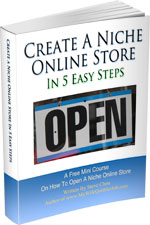
Ready To Get Serious About Starting An Online Business?
If you are really considering starting your own online business, then you have to check out my free mini course on How To Create A Niche Online Store In 5 Easy Steps.
In this 6 day mini course, I reveal the steps that my wife and I took to earn 100 thousand dollars in the span of just a year. Best of all, it's absolutely free!

